GEEKOM GT13 Pro is a Windows 11 mini PC powered by a 13th Gen Intel Core i9-13900H or Core i7-13620H processor with Intel Xe Iris graphics, two Thunderbolt 4 ports, a 2.5GbE port, WiFi 6E and Bluetooth 5.2 connectivity.
GEEKOM sent us a review sample of the GEEKOM GT13 Pro mini PC with a Core i9-13900H 14-core/20-thread processor, 32GB RAM, and a 2TB NVMe SSD. We would usually do a three-part review, but the GEEKOM GT13 Pro uses the same motherboard as the GEEKOM Mini IT13 reviewed at the end of last year. So we’ll do a more condensed one-part review focusing on the differences between the two models in terms of features and performance in both Windows 11 Pro and Ubuntu 24.04.
GEEKOM GT13 Pro specifications
- SoC – Intel Core i9-13900H 13th Gen Raptor Lake processor with 14 cores, 20 threads up to 5.40 GHz, 24MB Cache, Iris Xe graphics; TDP: 45W
- System Memory – Dual-channel DDR4-3200 SODIMM, supports up to 64GB
- Storage
- M.2 2280 PCIe Gen 4 x4 SSD, support up to 2TB
- M.2 2242 SATA SSD slot, expandable up to 1TB
2.5-inch SATA HDD (7mm) slot, expandable up to 2TB- SD card reader
- Video Output – 2x HDMI 2.0 ports, DisplayPort via USB4 ports
- Audio – 3.5mm audio jack, digital audio via HDMI
- Networking
- 2.5GbE RJ45 port
- Wi-Fi 6E and Bluetooth 5.2 via
Intel AX211 moduleAzurewave AW-XB591NF
- USB
- 2x USB4 ports (40 Gbps)
- 3x USB 3.2 Gen 2 ports (10 Gbps)
- 1x USB 2.0 port
- Misc – Power button, Kensington lock slot
- Power Supply – 19V, 6.32A via DC jack
- Dimensions –
117 x 112 x 49.2mm112.4 x 112.4 x 37mm
We’ve highlighted the differences in bold and strikethrough. From the specifications alone, the only differences are the removal of the 2.5-inch SATA slot leading to a compact design, and a MediaTek MT7922-based Azuware AW-XN951NF module replacing the Intel AX211 module found in the Mini IT13. But as we’ll see below with unboxing and teardown, there are a few other changes.
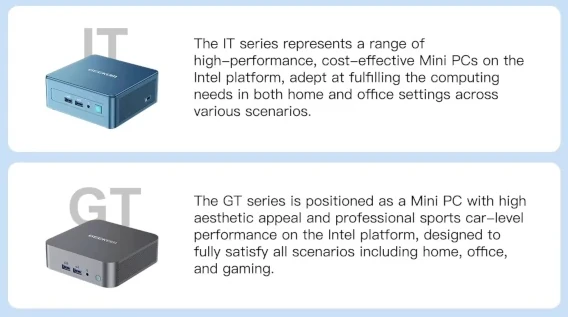
GEEKOM explains the main difference between IT and GT Intel mini PCs is that the IT series focuses on cost-effectiveness and the GT series more on external design, aesthetics, and high performance.
GEEKOM GT13 Pro unboxing
We received the mini PC in a sturdy retail box.
As usual, you’ll find the main specs on the bottom side. In our case, we got a GT13 Pro with an Intel Core i9-13900H, 32GB DDR4 SO-DIMM memory, and a 2TB M.2 SSD as expected.
The package content for the GT13 Pro is similar to the one for the Mini IT13 with 120W power brick and power cord, an HDMI cable, a Thank You card, a user guide, a VESA mount, and a set of screws. The main difference is that the power supply for the GEEKOM GT13 Pro is much more compact and portable.
The ports’ arrangement is the same as on the GEEKOM Mini IT13 with two USB 3.2 ports, a 3.5mm audio jack, and a power button on the front panel. The other ports can be found on the rear panel with a 19V DC jack, two 40 Gbps USB-C ports with DisplayPort Alt mode, a 2.5GbE RJ45 jack, a USB 3.2 port, a USB 2.0 port, and two HDMI 2.0 ports.
We also get a full-size SD card slot on the size. So, there are no changes here except for the missing Kensington Lock slot on the GEEKOM GT13 Pro and a different color scheme.
GEEKOM GT13 Pro teardown
Removing the four screws on the bottom cover allows us to open the mini PC. The WiFi antenna is attached to that cover. It’s the same design as GEEKOM A8 mini PC for which we had to replace the antenna since we broke the wire when doing the teardown. Be careful if you need to open the mini PC to change memory, storage, or the wireless module.
We need to loosen four more screws to remove the cooling plate fitted with a thermal pad to access the motherboard. After that, we removed the RAM and SSD modules. While our GEEKOM Mini IT13 sample came with a Lexar NM7A1 SSD with 2TB capacity and two 16GB Lexar LD4AS016G DDR4 sticks at 3,200 MHz, the GEEKOM GT13 Pro ships with an ACER N7000CN-2TB SSD and two 16GB Wooposit WPBH32D416SWA-16G DDR4 sticks at 3,200 MHz. The basic specs are the same, but performance may be different, and as we’ll see below the ACER SSD is quite faster.
Once the RAM modules and SSD are removed we can have a clear look at the GEEKOM GT13 Pro motherboard and compare it to the one for the GEEKOM Mini IT13, and from the look of it, they are identical.
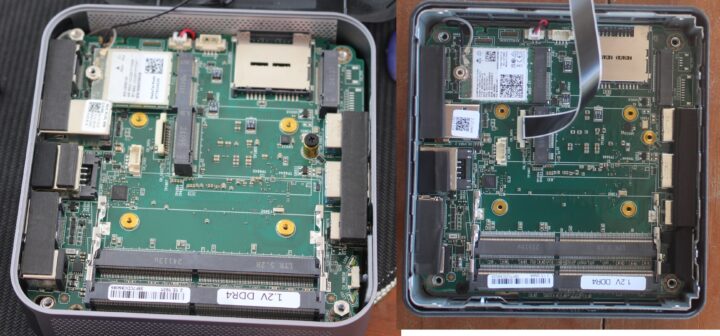
The wireless module can be found under the SSD and the GEEKOM GT13 Pro relies on the MediaTek MT7922-based Azurewave AW-XB591NF WiFi 6E and Bluetooth 5.3 modules instead of the Intel AX211 WiFi 6E and Bluetooth 5.3 module found in the GEEKOM Mini IT13.
While the wireless modules’ specs are similar, I’d still consider this a downgrade, especially for Linux users since Bluetooth won’t work, unless you are ready to rebuild the Linux kernel or wait for the Linux 6.10 release.
System overview and features testing
This part will be short as the GEEKOM GT13 Pro and GEEKOM Mini IT13 rely on the same motherboard.
A look at the System->About window shows we have a GT13_Pro system with an Intel Core i9-13900H clocked at 2.6 GHz (base frequency), 32GB RAM, and Windows 11 Pro 64-bit 23H2.
The PL1 (short duration) and PL2 (long duration) power limits are set to 35W (PBP) and 64W (MTP) respectively, while GEEKOM Mini IT13 was set to 35W (PDP) and 80W (MTP).
HWiNFO64 confirms we have to Shenzhen WODPOSIT Technology 16GB DDR4-3200MHz SO-DIMM module as we’ve just seen in our teardown.
Networking is implemented with an Intel i225-V controller like in the Mini IT13, but as mentioned in the teardown, we have a MetiaTek MT7622 wireless module instead of the Intel AX211.
GEEKOM GT13 Pro benchmarks in Windows 11 Pro
Let’s go through our usual benchmarks to find out if there are any notable performance differences between the two Intel Core i9-13900H mini PCs from GEEKOM. Let’s start with PCMark
6,456 points in PCMark 10.
The GEEKOM GT13 Pro achieved 5,445 points in 3DMark’s Fire Strike benchmark.
That would be 5648.7 points in PassMark Rating PerformanceTest 11.0 with an impression Disk Mark result that places in the top 3% of results. CrystalDiskMark benchmark confirms the excellent performance of the SSD with 7,100 MB/s sequential read speed, 6,384 MB/s sequential write speed, and good random I/Os. For reference, the GEEKOM Mini IT13’s SSD achieved 4,854.38 MB/s and 4,476.05 MB/s sequential R/W, so the GEEKOM GT13 Pro is better in that respect.
Cinebench R23 can be used to test the single-core and multi-core performance of the Core i9-13900H processor and get a first idea about the system’s cooling efficiency.
The GEEKOM GT13 Pro got a single-core score of 1,889 points and a multi-core score of 11,804 points with an MP ratio of 6.25x, or about the same as the GEEKOM Mini IT 13 with 1,943 points for the single-core benchmark and 11,855 points for the multi-core benchmark with a 6.1x MP ratio.
The GPU was further tested with the Unigine Heaven Benchmark 4.0 and the system could render the scene at 61.6 fps on average with a score of 1551 points in the standard 1920×1080 resolution.
GEEKOM GT13 Pro vs GEEKOM Mini IT13 Windows 11 benchmarks comparison
The GEEKOM GT13 Pro and Mini IT13 have the same basic specifications with an Intel Core i9-13900H 14-core/20-thread Raptor Lake processor, 32GB DDR4-3200, a 2TB NVMe SSD, and Windows 11 Pro installed. Both mini PCs were tested in a room with an ambient temperature of about 28°C. Let’s compare the benchmark results in Windows to find out if there are any discrepancies.
| GEEKOM GT13 Pro | GEEKOM Mini IT13 | Delta | |
|---|---|---|---|
| PCMark 10 | 6456 | 6681 | -3.4% |
| - Essentials | 12046 | 11938 | +0.9% |
| - Productivity | 8037 | 8341 | -3.6% |
| - Digital content creation | 7544 | 8126 | -7.2% |
| 3DMark (Fire Strike) | 5445 | 5387 | +0.9% |
| PerformanceTest 11.0 | 5648.7 | 5580.4 | +1.2% |
| - CPU Mark | 25751.5 | 25363.1 | +1.5% |
| - 2D Graphics Mark | 825.3 | 547.6 | +50.7% |
| - 3D Graphics Mark | 3628.6 | 3728.2 | -2.7% |
| - Memory Mark | 3788.5 | 3925.9 | -3.5% |
| - Disk Mark | 49513.3 | 38135.5 | +29.8% |
| Cinebench R23 | |||
| - Single Core | 1889 | 1943 | -2.8% |
| - Multi Core | 11804 | 11855 | -0.4% |
The results are very similar except for PassMark 2D graphics and storage scores where the GEEKOM GT13 Pro is significantly faster. The iGPU has obviously not changed, so I can only assume a firmware or driver change since last November, and the SSD is indeed much faster as we’ve already seen with CrystalDiskMark.
GEEKOM GT13 Pro Ubuntu 24.04 system information
We’ve resized the Windows partition in about half to install Ubuntu 24.04 alongside in dual boot configuration, and the process went smoothly. The About window in Settings correctly reports we have a GEEKOM GT13 Pro with a 13th Gen Intel Core i9-13900H processor with 20 threads, 32GB RAM, and a 2TB SSD running Ubuntu 24.04 LTS
We can get a few more details with the inxi command line:
|
1 2 3 4 5 6 7 8 9 10 11 12 13 14 15 16 17 18 19 20 21 22 23 24 25 26 27 28 29 30 31 32 33 34 35 36 37 38 39 40 41 42 43 44 45 46 47 48 49 50 51 52 53 54 |
aey@GT13-Pro-CNX:~$ inxi -Fc0 System: Host: GT13-Pro-CNX Kernel: 6.8.0-35-generic arch: x86_64 bits: 64 Desktop: GNOME v: 46.0 Distro: Ubuntu 24.04 LTS (Noble Numbat) Machine: Type: Server System: GEEKOM product: GT13 Pro v: N/A serial: <superuser required> Mobo: N/A model: GT13 Pro serial: <superuser required> UEFI: American Megatrends LLC. v: 1.16 date: 04/16/2024 CPU: Info: 14-core (6-mt/8-st) model: 13th Gen Intel Core i9-13900H bits: 64 type: MST AMCP cache: L2: 11.5 MiB Speed (MHz): avg: 727 min/max: 400/5200:5400:4100 cores: 1: 400 2: 400 3: 400 4: 400 5: 400 6: 400 7: 3249 8: 400 9: 400 10: 400 11: 400 12: 400 13: 400 14: 400 15: 400 16: 400 17: 400 18: 400 19: 4101 20: 400 Graphics: Device-1: Intel Raptor Lake-P [Iris Xe Graphics] driver: i915 v: kernel Display: wayland server: X.Org v: 23.2.6 with: Xwayland v: 23.2.6 compositor: gnome-shell driver: dri: iris gpu: i915 resolution: 1920x1080~60Hz API: EGL v: 1.5 drivers: iris,swrast platforms: wayland,x11,surfaceless,device API: OpenGL v: 4.6 compat-v: 4.5 vendor: intel mesa v: 24.0.5-1ubuntu1 renderer: Mesa Intel Graphics (RPL-P) Audio: Device-1: Intel Raptor Lake-P/U/H cAVS driver: snd_hda_intel API: ALSA v: k6.8.0-35-generic status: kernel-api Server-1: PipeWire v: 1.0.5 status: active Network: Device-1: MEDIATEK MT7922 802.11ax PCI Express Wireless Network Adapter driver: mt7921e IF: wlp86s0 state: up mac: 1c:ce:51:f7:33:a6 Device-2: Intel Ethernet I225-V driver: igc IF: enp87s0 state: down mac: 38:f7:cd:c8:60:86 Bluetooth: Device-1: IMC Networks Wireless_Device driver: btusb type: USB Report: hciconfig ID: hci0 rfk-id: 0 state: down bt-service: enabled,running rfk-block: hardware: no software: no address: 00:00:00:00:00:00 Drives: Local Storage: total: 1.82 TiB used: 14.77 GiB (0.8%) ID-1: /dev/nvme0n1 vendor: Acer model: SSD N7000 2TB size: 1.82 TiB Partition: ID-1: / size: 864.04 GiB used: 14.71 GiB (1.7%) fs: ext4 dev: /dev/nvme0n1p5 ID-2: /boot/efi size: 96 MiB used: 59.1 MiB (61.6%) fs: vfat dev: /dev/nvme0n1p1 Swap: ID-1: swap-1 type: file size: 8 GiB used: 0 KiB (0.0%) file: /swap.img Sensors: System Temperatures: cpu: 64.0 C mobo: N/A Fan Speeds (rpm): N/A Info: Memory: total: 32 GiB available: 31.04 GiB used: 3 GiB (9.7%) Processes: 381 Uptime: 3h 15m Shell: Bash inxi: 3.3.34 |
Everything is properly detected, but as in our other review with an MT7922 module, Bluetooth won’t work with a MAC address set to 00:00:00:00:00:00… The idle temperature seems a little high at 64.0°C, but at least it looks to be reported correctly which was not the case in the Mini IT13 with Ubuntu 22.04 (27.8°C).
Ubuntu 24.04 Benchmarks on GEEKOM GT13 Pro
Let’s start with Thomas Kaiser’s sbc-bench.sh script:
|
1 2 3 4 5 6 7 8 9 10 11 12 13 14 15 16 17 18 19 20 21 22 23 24 25 26 27 28 29 30 31 32 33 34 35 36 37 38 39 40 41 42 43 44 45 46 47 48 49 50 51 52 53 54 55 56 57 58 59 60 61 62 63 64 65 66 67 68 69 70 71 72 73 74 75 76 77 78 79 80 81 82 83 84 85 86 87 88 89 90 91 92 93 94 95 96 97 98 99 100 101 102 103 104 105 106 107 108 109 110 111 112 113 114 115 116 117 118 119 120 121 122 123 124 125 126 127 128 129 130 131 132 133 134 135 136 137 138 139 140 141 142 143 144 145 |
aey@GT13-Pro-CNX:~/Downloads/sbc-bench-master$ sudo ./sbc-bench.sh -r [sudo] password for aey: Starting to examine hardware/software for review purposes... sbc-bench v0.9.67 Installing needed tools: distro packages already installed. Done. Checking cpufreq OPP. Done. Executing tinymembench. Done. Executing RAM latency tester. Done. Executing OpenSSL benchmark. Done. Executing 7-zip benchmark. Done. Throttling test: heating up the device, 5 more minutes to wait. Done. Checking cpufreq OPP again. Done (13 minutes elapsed). Results validation: * Measured clockspeed not lower than advertised max CPU clockspeed * No swapping * Background activity (%system) OK * Powercap detected. Details: "sudo powercap-info -p intel-rapl" -> https://tinyurl.com/4jh9nevj Full results uploaded to https://0x0.st/XTAP.bin # GEEKOM GT13 Pro / i9-13900H Tested with sbc-bench v0.9.67 on Tue, 18 Jun 2024 20:40:51 +0700. Full info: [https://0x0.st/XTAP.bin](http://0x0.st/XTAP.bin) ### General information: Information courtesy of cpufetch: Name: 13th Gen Intel(R) Core(TM) i9-13900H Microarchitecture: Raptor Lake Technology: 10nm P-cores: Max Frequency: 5.400 GHz Cores: 6 cores (12 threads) AVX: AVX,AVX2 FMA: FMA3 L1i Size: 32KB (192KB Total) L1d Size: 48KB (288KB Total) L2 Size: 1.25MB (7.5MB Total) E-cores: Max Frequency: 4.100 GHz Cores: 8 cores AVX: AVX,AVX2 FMA: FMA3 L1i Size: 64KB (512KB Total) L1d Size: 32KB (256KB Total) L2 Size: 2MB (4MB Total) L3 Size: 24MB The CPU features 2 clusters of different core types: i9-13900H, Kernel: x86_64, Userland: amd64 CPU sysfs topology (clusters, cpufreq members, clockspeeds) cpufreq min max CPU cluster policy speed speed core type 0 0 0 400 5200 Raptor Cove 1 0 1 400 5200 Raptor Cove 2 0 2 400 5200 Raptor Cove 3 0 3 400 5200 Raptor Cove 4 0 4 400 5400 Raptor Cove 5 0 5 400 5400 Raptor Cove 6 0 6 400 5400 Raptor Cove 7 0 7 400 5400 Raptor Cove 8 0 8 400 5200 Raptor Cove 9 0 9 400 5200 Raptor Cove 10 0 10 400 5200 Raptor Cove 11 0 11 400 5200 Raptor Cove 12 0 12 400 4100 Gracemont 13 0 13 400 4100 Gracemont 14 0 14 400 4100 Gracemont 15 0 15 400 4100 Gracemont 16 0 16 400 4100 Gracemont 17 0 17 400 4100 Gracemont 18 0 18 400 4100 Gracemont 19 0 19 400 4100 Gracemont 31781 KB available RAM ### Policies (performance vs. idle consumption): Status of performance related policies found below /sys: /sys/module/pcie_aspm/parameters/policy: default [performance] powersave powersupersave ### Clockspeeds (idle vs. heated up): Before at 63.0°C: cpu0-cpu11 (Raptor Cove): OPP: 5200, Measured: 5183 cpu12-cpu19 (Gracemont): OPP: 4100, Measured: 4085 After at 85.0°C: cpu0-cpu11 (Raptor Cove): OPP: 5200, Measured: 4906 (-5.7%) cpu12-cpu19 (Gracemont): OPP: 4100, Measured: 4085 ### Performance baseline * cpu0 (Raptor Cove): memcpy: 23110.5 MB/s, memchr: 34490.3 MB/s, memset: 27322.1 MB/s * cpu12 (Gracemont): memcpy: 13400.6 MB/s, memchr: 18127.7 MB/s, memset: 14649.7 MB/s * cpu0 (Raptor Cove) 16M latency: 18.90 17.39 18.07 17.45 17.99 17.49 18.59 26.01 * cpu12 (Gracemont) 16M latency: 27.14 25.49 27.22 25.69 26.73 25.03 25.98 32.93 * cpu0 (Raptor Cove) 128M latency: 80.57 77.45 79.98 76.63 79.32 75.53 83.93 79.57 * cpu12 (Gracemont) 128M latency: 102.7 101.8 103.4 102.2 103.0 98.92 101.5 113.8 * 7-zip MIPS (3 consecutive runs): 58215, 51111, 51194 (53510 avg), single-threaded: 5932 * `aes-256-cbc 1277384.00k 1582535.34k 1676610.13k 1714333.70k 1658634.24k 1725726.72k (Raptor Cove)` * `aes-256-cbc 1047415.34k 1420579.29k 1468562.43k 1481151.49k 1484507.82k 1485012.99k (Gracemont)` ### PCIe and storage devices: * MEDIATEK MT7922 802.11ax PCI Express Wireless Network Adapter: Speed 5GT/s, Width x1, driver in use: mt7921e, ASPM Disabled * Intel Ethernet I225-V: Speed 5GT/s, Width x1, driver in use: igc, ASPM Disabled * O2 SD/MMC Card Reader: Speed 2.5GT/s, Width x1, driver in use: sdhci-pci, ASPM Disabled * 1.8TB "Acer SSD N7000 2TB" SSD as /dev/nvme0: Speed 16GT/s, Width x4, 0% worn out, drive temp: 38°C, ASPM Disabled * Macronix MX25L25635E 32MB SPI NOR flash, drivers in use: spi-nor/intel-spi ### Challenging filesystems: The following partitions are NTFS: nvme0n1p3,nvme0n1p4 -> https://tinyurl.com/mv7wvzct ### Swap configuration: * /swap.img on /dev/nvme0n1p5: 8.0G (0K used) ### Software versions: * Ubuntu 24.04 LTS (noble) * Compiler: /usr/bin/gcc (Ubuntu 13.2.0-23ubuntu4) 13.2.0 / x86_64-linux-gnu * OpenSSL 3.0.13, built on 30 Jan 2024 (Library: OpenSSL 3.0.13 30 Jan 2024) ### Kernel info: * `/proc/cmdline: BOOT_IMAGE=/boot/vmlinuz-6.8.0-35-generic root=UUID=db5cd3b9-1585-486c-914a-f3abc9ce5b23 ro quiet splash vt.handoff=7` * Vulnerability Reg file data sampling: Mitigation; Clear Register File * Vulnerability Spec store bypass: Mitigation; Speculative Store Bypass disabled via prctl * Vulnerability Spectre v1: Mitigation; usercopy/swapgs barriers and __user pointer sanitization * Vulnerability Spectre v2: Mitigation; Enhanced / Automatic IBRS; IBPB conditional; RSB filling; PBRSB-eIBRS SW sequence; BHI BHI_DIS_S * Kernel 6.8.0-35-generic / CONFIG_HZ=1000 Waiting for the device to cool down......... . 67.0°C |
The script does not report any thermal throttling, but power throttling likely occurs as the 7-zip benchmark starts strong at 58,215 points for the first, then drops to 51,111 and 51,194 points for the second nd third run with an average of 53,510 points.
Let’s check thermal settings as recommended by sbc-bench.sh:
|
1 2 3 4 5 6 7 8 9 10 11 12 13 14 15 16 17 18 19 20 21 22 23 24 25 26 27 28 29 30 31 32 33 34 35 36 37 38 39 40 41 42 43 44 |
aey@GT13-Pro-CNX:~$ sudo powercap-info -p intel-rapl [sudo] password for aey: enabled: 1 Zone 0 name: package-0 enabled: 1 max_energy_range_uj: 262143328850 energy_uj: 101607915603 Constraint 0 name: long_term power_limit_uw: 200000000 time_window_us: 27983872 max_power_uw: 45000000 Constraint 1 name: short_term power_limit_uw: 64000000 time_window_us: 2440 max_power_uw: 0 Constraint 2 name: peak_power power_limit_uw: 85000000 max_power_uw: 0 Zone 0:0 name: core enabled: 0 max_energy_range_uj: 262143328850 energy_uj: 48294420372 Constraint 0 name: long_term power_limit_uw: 0 time_window_us: 976 Zone 1 name: psys enabled: 0 max_energy_range_uj: 262143328850 energy_uj: 2720575921 Constraint 0 name: long_term power_limit_uw: 0 time_window_us: 27983872 Constraint 1 name: short_term power_limit_uw: 0 time_window_us: 976 |
The power limits are set to 45W (PL1) and 64W (PL2), while in Windows 11 it is set to 35W (PL1) and 64W (PL2). The Mini IT13 was set to 45W and 80W in Ubuntu 22.04 (and Windows 11).
Next up is the Geekbench 6.3.0 benchmark.
The GEEKOM GT13 Pro achieved 2,572 points in the single-core benchmarks and 11,545 points in the multi-core benchmark.
We tested the GPU with Unigine Heaven Benchmark 4.0 benchmark like in Windows, and the system was a bit slower in Ubuntu rendering the benchmark at 51.6 FPS with a score of 1,299 points at the standard 1920×1080 resolution.
We finally evaluated web browsing performance with Speedometer 2.0 in Firefox, where the system managed to get a high “327 runs per minute” score.
Let’s do a quick test for the SSD with iozone3 in Ubuntu:
|
1 2 3 4 5 6 7 8 9 10 11 |
aey@GT13-Pro-CNX:~$ sudo iozone -e -I -a -s 1000M -r 4k -r 16k -r 512k -r 1024k -r 16384k -i 0 -i 1 -i 2 random random bkwd record stride kB reclen write rewrite read reread read write read rewrite read fwrite frewrite fread freread 1024000 4 405213 481396 354303 493633 98244 448482 1024000 16 1299487 1417591 1327127 1249175 301833 1226428 1024000 512 5203757 5206691 4582516 4633711 3410967 3664313 1024000 1024 5479981 5703529 4796773 4848644 4249792 4955524 1024000 16384 4877639 5913257 5820845 5929337 5878964 4852502 iozone test complete. |
That would be about 5,820 MB/s sequential read speed and 4,877 MB/s sequential write speed, not quite as high as reported in CrystalDiskMark in Windows, but still much faster than iozone3 results with the SSD in GEEKOM Mini IT13 that managed 4.34 GB/s reads and 3.69 GB/s writes.
GEEKOM GT13 Pro vs Mini IT13 Ubuntu benchmarks comparison
Let’s compare the benchmark results in both the Core i9-13900H mini PCs. Note that while the GT13 Pro runs Ubuntu 24.04, the GEEKOM Mini IT13 was tested with Ubuntu 22.04.
| GEEKOM GT13 Pro | GEEKOM Mini IT13 | Delta | |
|---|---|---|---|
| sbc-bench.sh | |||
| - memcpy | 23,110.5 MB/s (P-core) | 24,014.4 MB/s (P-core) | -3.8% |
| - memset | 27,322.1 MB/s (P-core) | 26,647.9 MB/s (P-Core) | +2.5% |
| - 7-zip (average) | 53,510 | 56,540 | -5.4% |
| - 7-zip (top result) | 58,215 | 60,981 | -4.5% |
| - OpenSSL AES-256 16K | 1,725,726.72k | 1,844,401.49k (P-Core) | -6.4% |
| Geekbench 6 Single | 2,572 | 2,745 | -6.3% |
| Geekbench 6 Multi | 11,545 | 11,974 | -3.6% |
| Unigine Heaven score | 1,299 | 1,333 | -2.5% |
| Speedometer 2.0 (firefox) | 327 | 273 | +19.7% |
The higher PL2 value may have boosted GEEKOM Mini IT13’s performance by a few percentage points. The Speedometer 2.0 score is much higher on the GEEKOM GT13 Pro, but it’s likely because of the continuous performance improvements in web browsers, and the tests were done about 8 months apart.
WiFi 6 performance in Windows and Ubuntu
At this point would typically test both 2.5GbE and WiFi. But the former works fine at 2.35 Gbps even with full duplex, so we’ll focus our reporting on WiFi 6 using a Xiaomi Mi AX6000 router and UP Xtreme i11 mini PC (192.168.31.12) on the other side connected over 2.5 GbE.
Test results in Windows:
- Download
|
1 2 3 4 5 6 7 8 9 10 11 12 13 14 15 16 17 |
PS C:\Users\aey\Downloads\iperf3.17_64\iperf3.17_64> .\iperf3.exe -t 60 -c 192.168.31.12 -i 10 -R Connecting to host 192.168.31.12, port 5201 Reverse mode, remote host 192.168.31.12 is sending [ 5] local 192.168.31.14 port 52827 connected to 192.168.31.12 port 5201 [ ID] Interval Transfer Bitrate [ 5] 0.00-10.00 sec 1.11 GBytes 949 Mbits/sec [ 5] 10.00-20.00 sec 1.11 GBytes 949 Mbits/sec [ 5] 20.00-30.01 sec 1.11 GBytes 949 Mbits/sec [ 5] 30.01-40.00 sec 1.10 GBytes 949 Mbits/sec [ 5] 40.00-50.01 sec 1.11 GBytes 949 Mbits/sec [ 5] 50.01-60.00 sec 1.10 GBytes 949 Mbits/sec - - - - - - - - - - - - - - - - - - - - - - - - - [ ID] Interval Transfer Bitrate Retr [ 5] 0.00-60.06 sec 6.63 GBytes 949 Mbits/sec 0 sender [ 5] 0.00-60.00 sec 6.63 GBytes 949 Mbits/sec receiver iperf Done. |
- Upload
|
1 2 3 4 5 6 7 8 9 10 11 12 13 14 15 16 |
PS C:\Users\aey\Downloads\iperf3.17_64\iperf3.17_64> .\iperf3.exe -t 60 -c 192.168.31.12 -i 10 Connecting to host 192.168.31.12, port 5201 [ 5] local 192.168.31.14 port 52825 connected to 192.168.31.12 port 5201 [ ID] Interval Transfer Bitrate [ 5] 0.00-10.01 sec 1.10 GBytes 942 Mbits/sec [ 5] 10.01-20.00 sec 1.10 GBytes 943 Mbits/sec [ 5] 20.00-30.01 sec 1.10 GBytes 944 Mbits/sec [ 5] 30.01-40.01 sec 869 MBytes 729 Mbits/sec [ 5] 40.01-50.01 sec 1.10 GBytes 947 Mbits/sec [ 5] 50.01-60.00 sec 1.09 GBytes 941 Mbits/sec - - - - - - - - - - - - - - - - - - - - - - - - - [ ID] Interval Transfer Bitrate [ 5] 0.00-60.00 sec 6.34 GBytes 907 Mbits/sec sender [ 5] 0.00-60.06 sec 6.34 GBytes 906 Mbits/sec receiver iperf Done. |
In Ubuntu 24.04:
- Download
|
1 2 3 4 5 6 7 8 9 10 11 12 13 14 15 16 17 |
aey@GT13-Pro-CNX:~$ iperf3 -t 60 -c 192.168.31.12 -i 10 -R Connecting to host 192.168.31.12, port 5201 Reverse mode, remote host 192.168.31.12 is sending [ 5] local 192.168.31.14 port 43772 connected to 192.168.31.12 port 5201 [ ID] Interval Transfer Bitrate [ 5] 0.00-10.01 sec 1.09 GBytes 935 Mbits/sec [ 5] 10.01-20.01 sec 1.10 GBytes 941 Mbits/sec [ 5] 20.01-30.01 sec 1.10 GBytes 941 Mbits/sec [ 5] 30.01-40.01 sec 1.10 GBytes 942 Mbits/sec [ 5] 40.01-50.01 sec 1.09 GBytes 939 Mbits/sec [ 5] 50.01-60.01 sec 1.10 GBytes 942 Mbits/sec - - - - - - - - - - - - - - - - - - - - - - - - - [ ID] Interval Transfer Bitrate Retr [ 5] 0.00-60.05 sec 6.57 GBytes 940 Mbits/sec 1 sender [ 5] 0.00-60.01 sec 6.57 GBytes 940 Mbits/sec receiver iperf Done. |
- Upload
|
1 2 3 4 5 6 7 8 9 10 11 12 13 14 15 16 |
aey@GT13-Pro-CNX:~$ iperf3 -t 60 -c 192.168.31.12 -i 10 Connecting to host 192.168.31.12, port 5201 [ 5] local 192.168.31.14 port 45292 connected to 192.168.31.12 port 5201 [ ID] Interval Transfer Bitrate Retr Cwnd [ 5] 0.00-10.01 sec 1.10 GBytes 941 Mbits/sec 85 1.61 MBytes [ 5] 10.01-20.01 sec 1.10 GBytes 942 Mbits/sec 2 1.74 MBytes [ 5] 20.01-30.01 sec 1.10 GBytes 941 Mbits/sec 2 1.71 MBytes [ 5] 30.01-40.01 sec 1.10 GBytes 942 Mbits/sec 10 1.35 MBytes [ 5] 40.01-50.01 sec 1.10 GBytes 941 Mbits/sec 1 1.48 MBytes [ 5] 50.01-60.01 sec 1.09 GBytes 940 Mbits/sec 2 1.13 MBytes - - - - - - - - - - - - - - - - - - - - - - - - - [ ID] Interval Transfer Bitrate Retr [ 5] 0.00-60.01 sec 6.57 GBytes 941 Mbits/sec 102 sender [ 5] 0.00-60.06 sec 6.57 GBytes 940 Mbits/sec receiver iperf Done. |
The results are pretty similar in Windows and Linux, and 907 Mbps to 949 Mbps remains pretty good, although we could get even faster results with the AX211 module in the GEEKOM Mini IT13 in Ubuntu 22.04 with 1.13 Gbps downloads and 1.23 Gbps uploads, but only after turning on the display (if it was off, the connection was very slow).
Thermal performance under load
Like the GEEKOM Mini IT13, the GEEKOM GT13 Pro is a mini PC with one of the most powerful mobile processors – a 14-core Core i9-13900H – and cooling has to be taken into account. So we first tested the thermal performance to check CPU throttling in Windows 11 with HWiNFO64 and 3Dmark Fire Strike GPU benchmark. The temperature quickly reached 100°C and all six P-core were impacted by thermal throttling.
It’s very similar to what we experienced with the GEEKOM Mini IT13.
Switching to Ubuntu 24.04 we ran a stress test on all 20 threads and monitored the CPU temperature with Psensor, and the CPU frequency and temperature with sbc-bench.sh.
The Psensor chart shows the temperature jumps to 100°C during the first 30 seconds before quickly dropping and stabilizing in the 89-94°C range. The P-core runs at around 2,800 – 2,900 MHz. and E-core at 2,200 – 2,300 MHz after a while. At about 80°C, the GEEKOM Mini IT13’s package temperature was lower than the CPU temperature in the GEEKOM GT13 Pro, yet the CPU frequency was a little higher at 2,900 – 3,000 MHz for the P-cores and 2,300 – 2,400 MHz for the E-Cores which would explain the slightly better benchmarks results in Linux.
Fan noise
Like most such mini PCs, the GEEKOM GT13 Pro will have a fan that generates minimal noise when idle or light loads, but becomes noisier under loads. We use a sound level meter at 5 cm from the top of the device to measure noise in Windows 11:
- Idle – 38.5 – 39.7 dBA
- 3DMark Fire Strike – 40.8 – 56.7 dBA
The room background noise is 37 to 38 dBa when everything is quiet.
GEEKOM GT13 Pro power consumption
Here are the power consumption numbers of the GEEKOM GT13 Pro running Windows 11 Pro using a wall power meter:
- Power off – 1.5 Watts
- Idle – 6.9 – 8.5 Watts
- Video playback – 18.4 – 42.2W (YouTube 8K60fps in Chrome)
- Cinebench R23 Multi-core
- First few seconds – 80.5 – 82.9 Watts
- Longer test – 51.1 to 53.9 Watts
The mini PC was connected to WiFi 6, a USB keyboard, a USB mouse, and the CrowView display through a HDMI cable and its own power supply. The power consumption in Windows was a bit lower with the GEEKOM GT13 Pro potentially because of the lower PL2 value compared to the power consumption in the GEEKOM Mini IT13.
We repeated the similar tests in Ubuntu 24.04:
- Power off – 1.5 Watts
- Idle – 6.8 – 8.4 Watts
- Video playback – 21.4 – 38.3W (YouTube 8K60fps in Firefox)
- CPU stress tests (stress -c 20)
- First few seconds – 77.6 – 81.3 Watts
- Longer test – 51.9 to 52.6 Watts
Comparison with the MINI IT13 is harder in Linux as some values are higher, and some are lower, but still in the same ballpark.
Conclusion
The GEEKOM GT13 Pro mini PC works well in both Windows 11 and Ubuntu 24.04, except the company decided to keep using the MediaTek MT7922 wireless module found in their recent mini PCs, so Bluetooth won’t work in Linux without recompiling the kernel or relevant module.
Compared to the GEEKOM Mini IT13 with the same Core i9-13900H processor and identical memory and storage configuration (32GB/2TB), the GT13 Pro’s main advantage is its ultra-fast NVMe SSD that delivers up to 7,100 MB/s read speed, and significantly faster than the one in the Mini IT13. The Mini IT13 delivers slightly better system performance due to the higher PL2 power limit (which could be modified in the GT13 Pro as well) and lower CPU temperature.
You should buy the GEEKOM Mini IT13 if you need a 2.5-inch SATA slot, Bluetooth support in Linux is important to you, and want to save some money as the price is $806.55 after a 5% discount. The GEEKOM GT13 Pro is a better option if a slimmer and more aesthetic design is important to you, you’d like one of the fastest NVMe SSDs around, you don’t care about Bluetooth in Linux, and don’t mind paying around $50 extra. Note this conclusion is only valid if the company does not change the SSD or wireless module in their mini PCs, but at least GEEKOM only ships from local warehouses and has a 30-day free return policy, so the risk is limited.
I’d like to thank GEEKOM for sending the GT13 Pro for review with a Core i9-13900H SoC, 32GB DDR4, and a 2TB NVMe SSD. This model can be purchased for $854.05 on Amazon US with coupon code CNXGT13GM and on GEEKOM US with coupon code CNXGT13. The latter coupon can also be used on GEEKOM UK. Note the coupon codes are only valid until July 31, 2024. I also noticed the mini PC on GEEKOM DE where users can make use of the code GTAFF6 for a 6% discount until August 8.
CNXSoft: This review is a translation – with some modifications and additional insights – of the review on CNX Software Thailand by Suthinee Kerdkaew.

Jean-Luc started CNX Software in 2010 as a part-time endeavor, before quitting his job as a software engineering manager, and starting to write daily news, and reviews full time later in 2011.
Support CNX Software! Donate via cryptocurrencies, become a Patron on Patreon, or purchase goods on Amazon or Aliexpress


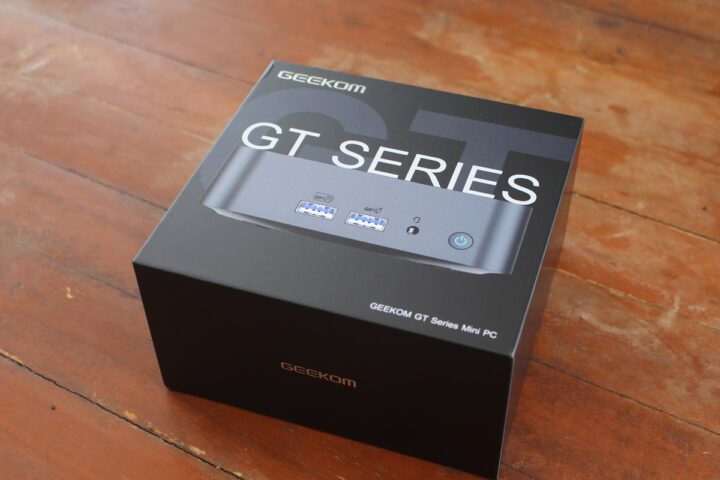
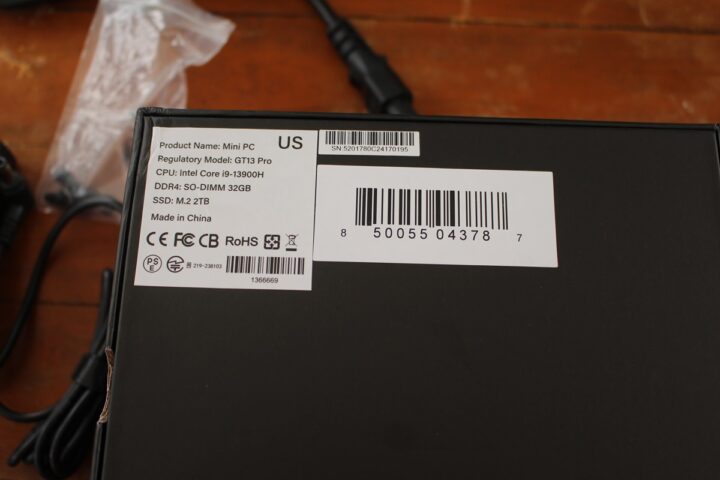
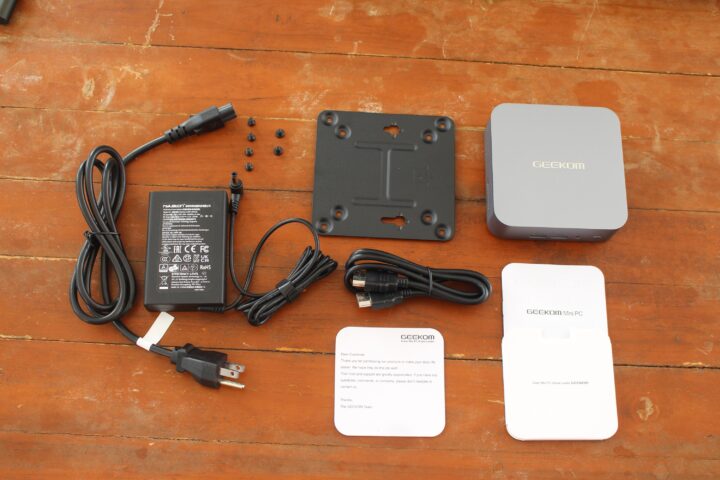
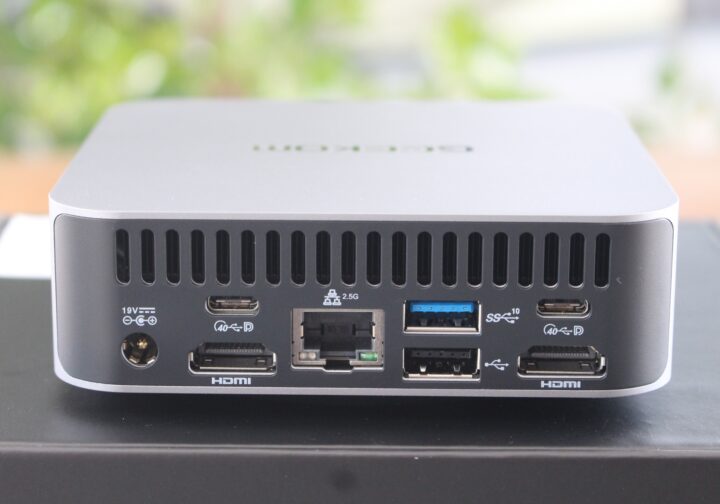
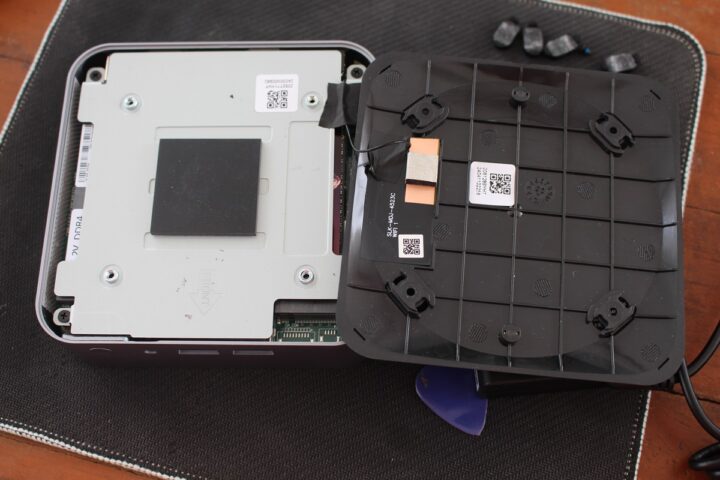
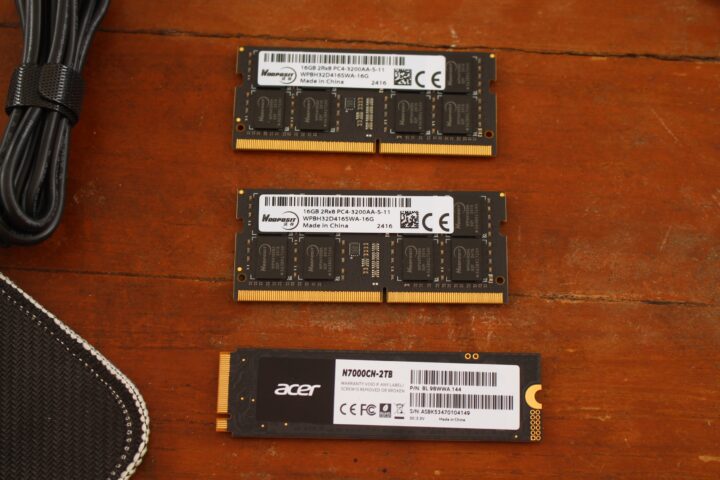
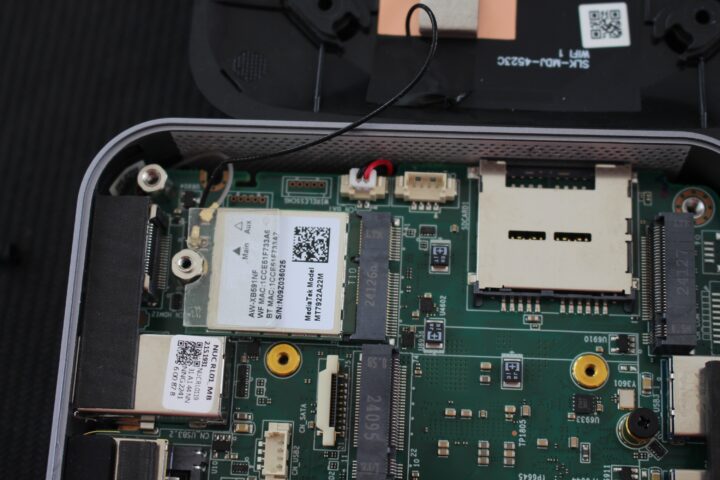
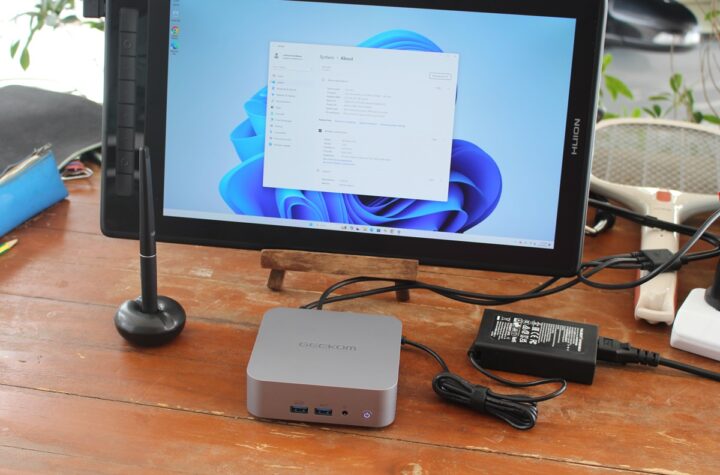
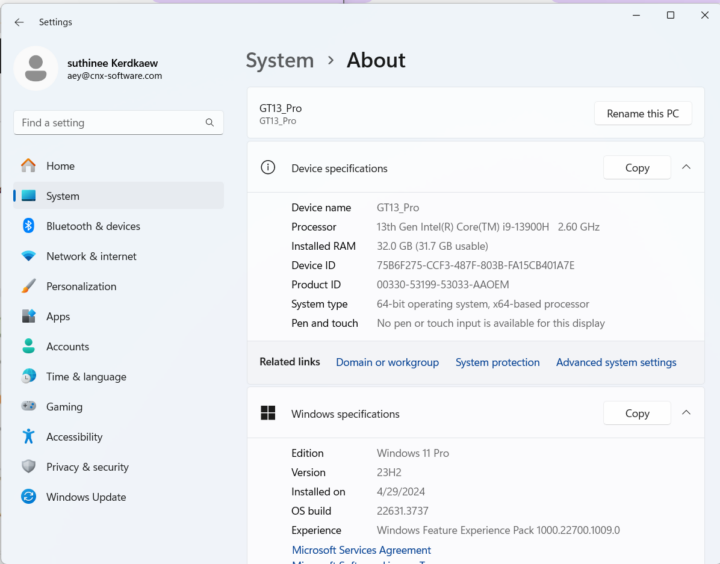
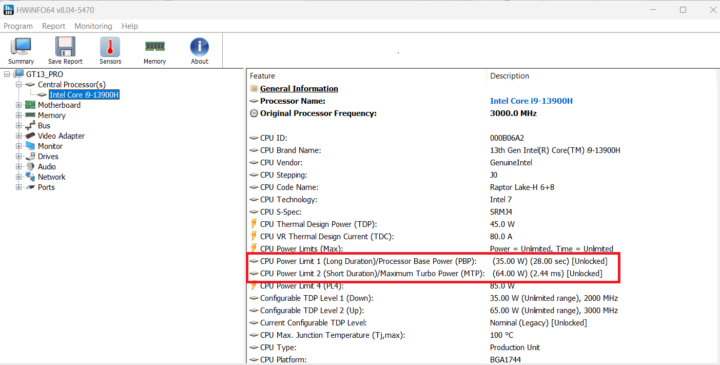
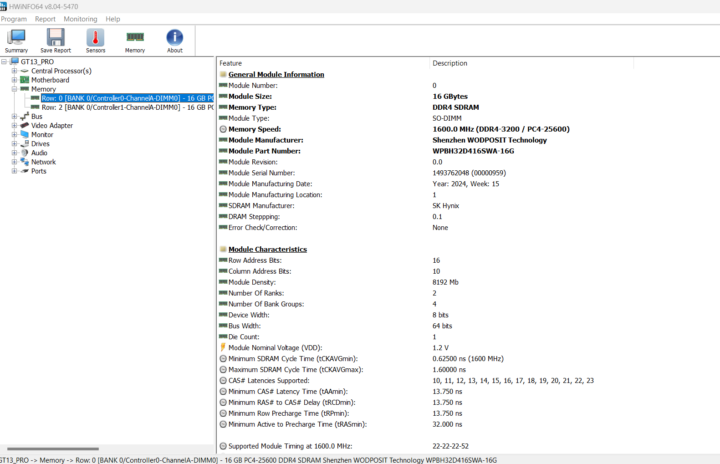
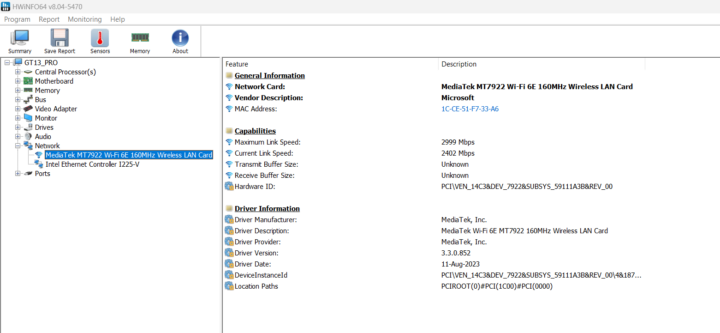
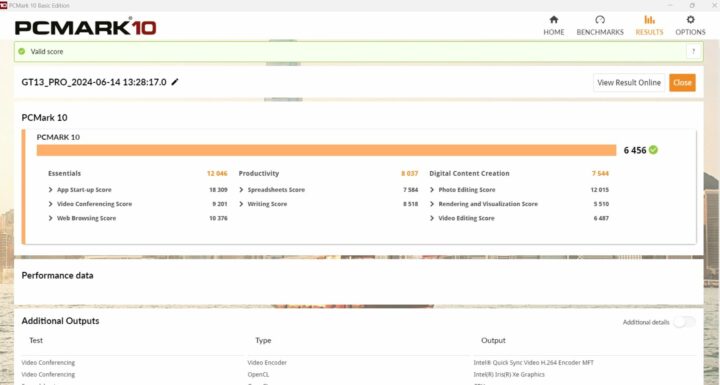
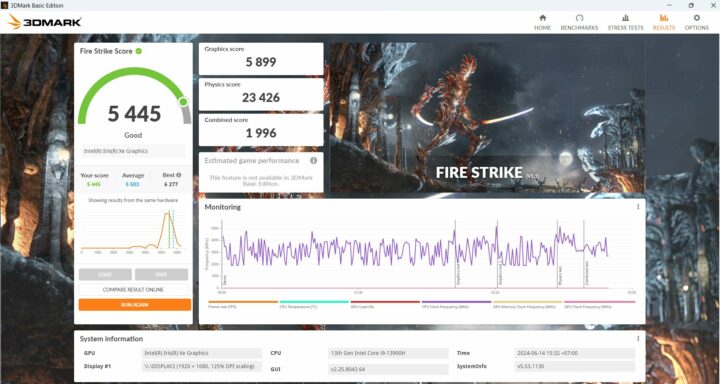
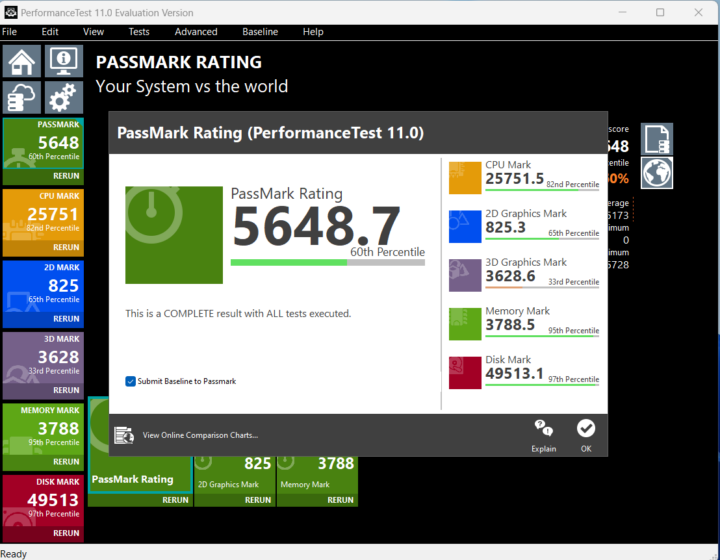
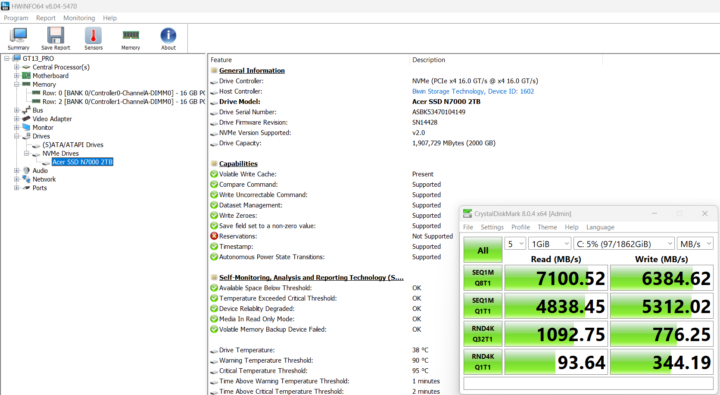
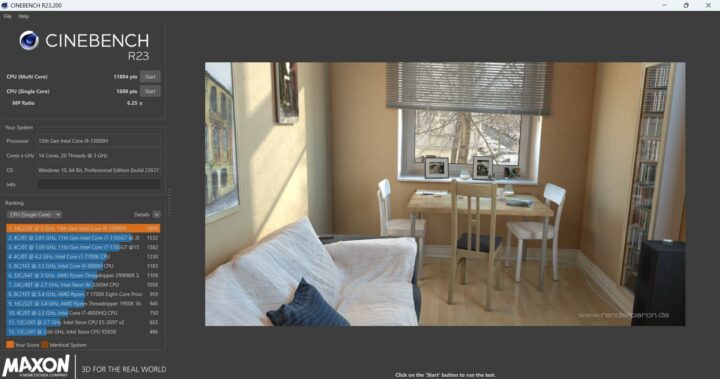
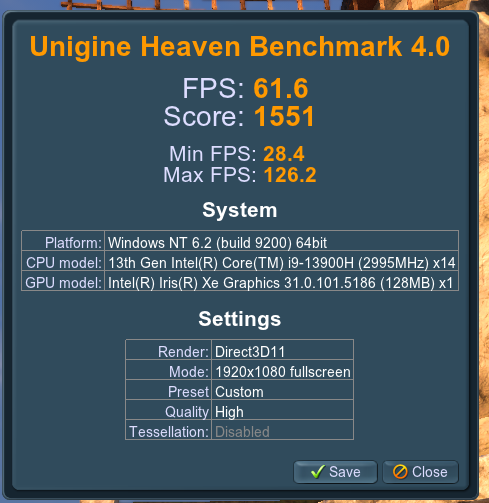
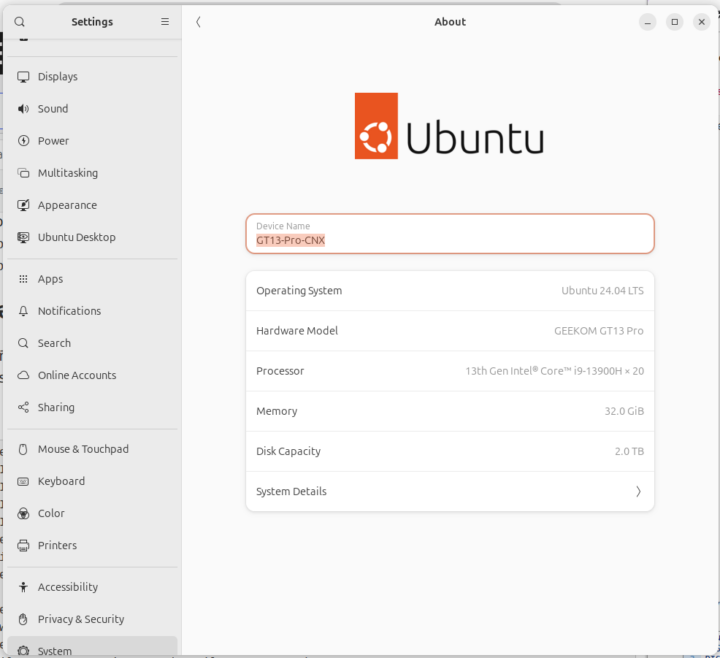
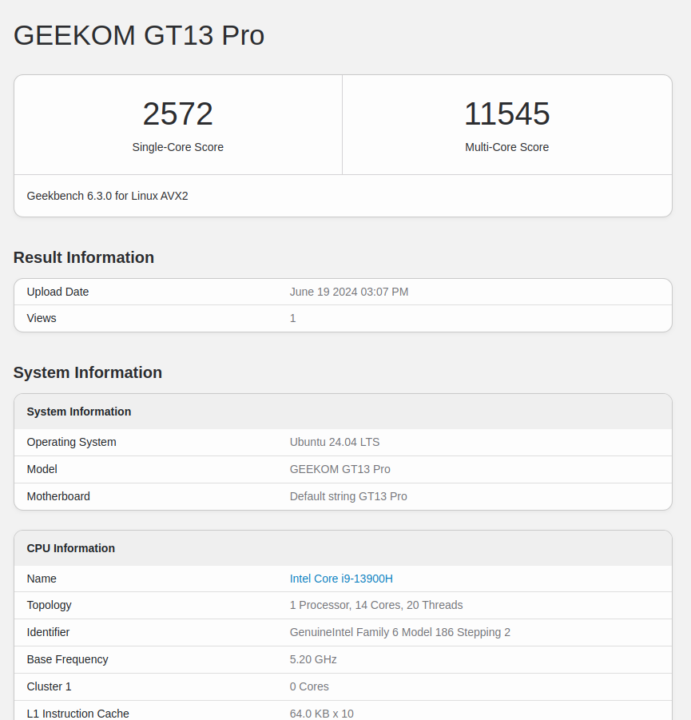
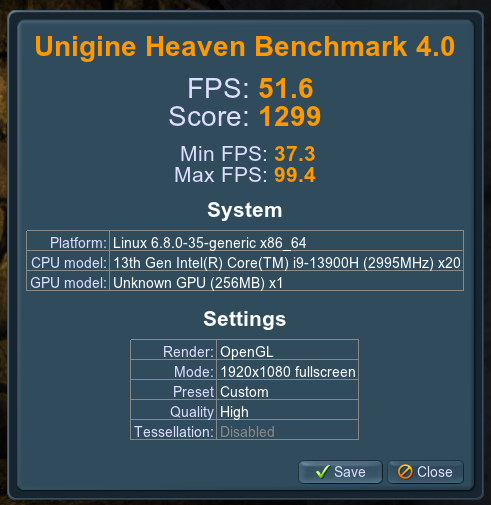
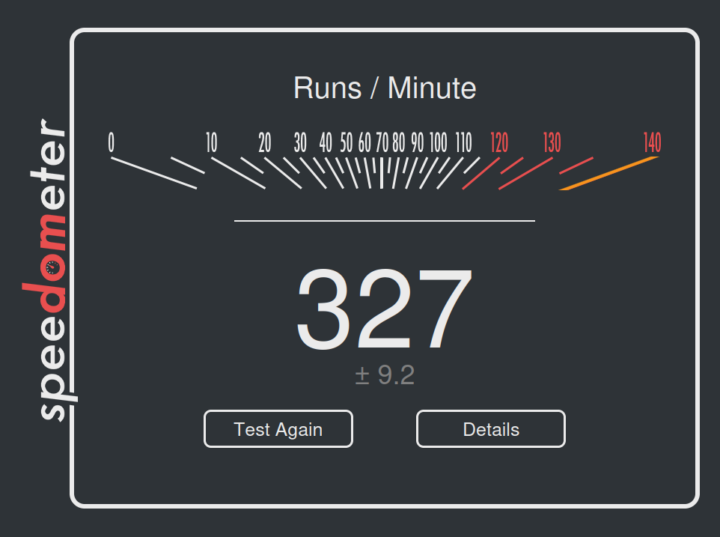
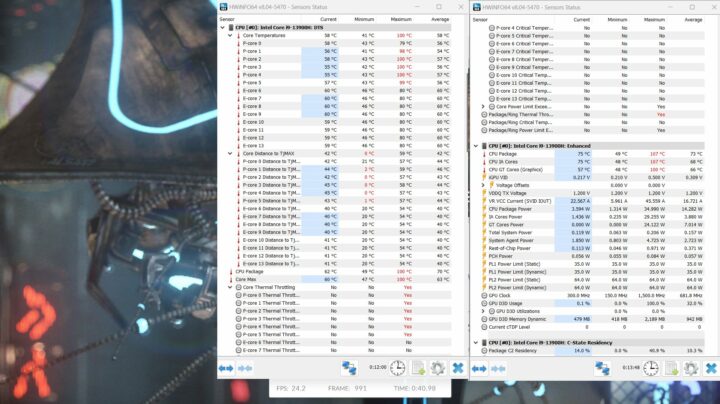




Thanks for the greatly detailed review!
I compared the benchmark numbers to my (now a few months old) Geekom A7 and it’s impressive how its AMD Ryzen 7940HS keeps besting the Intel processors Geekom puts even in their newest/latest/greatest product launches: the A7 beats the GT13Pro in literally all benchmarks except OpenSSL, and sometimes by a ridiculous margin (over 56% on the Unigine benchmark).
And nevertheless the A7 still consumes significantly *less* power, at least in idle (4.5W vs 6.5W). The GT13Pro does use
less power when CPU-stressed (81.3W vs 92.6W) but even so, due to the superior performance of the A7, depending on the workload it could end up saving energy because it will finish the workload and return to idle faster.
I wonder when Intel is going to get its game together and get back to being really competitive again… I like Intel and think that AMD could use some real competition for a change.
> The script does not report any thermal throttling
Doesn’t make that much sense on x86_64 since CPU performance is always affected by both power and thermal limits. This becomes obvious when looking at the monitoring section of sbc-bench: https://0x0.st/XTAP.bin
There’s a 100°C thermal limit reached during the openssl and 7-zip benchmarks but also a power limit clearly in place with the more demanding cpuminer and parts of the 7-zip benchmark (the temps then immediatey dropping to ~90°C)
I think I had seen the script report thermal throttling before, but probably on Arm only.
In Windows, HWiNFO64 can report thermal and CPU throttling separately and does that per core.